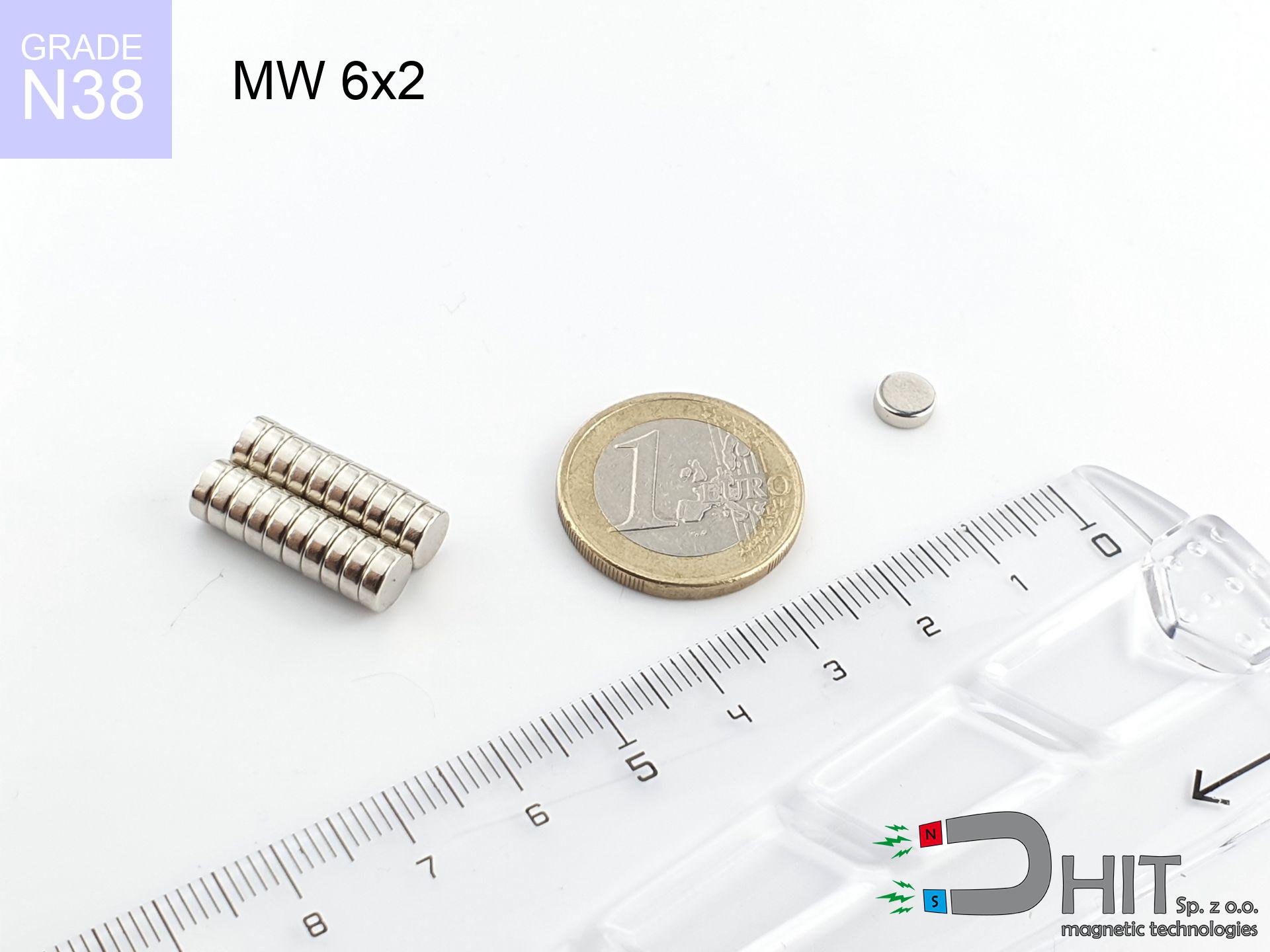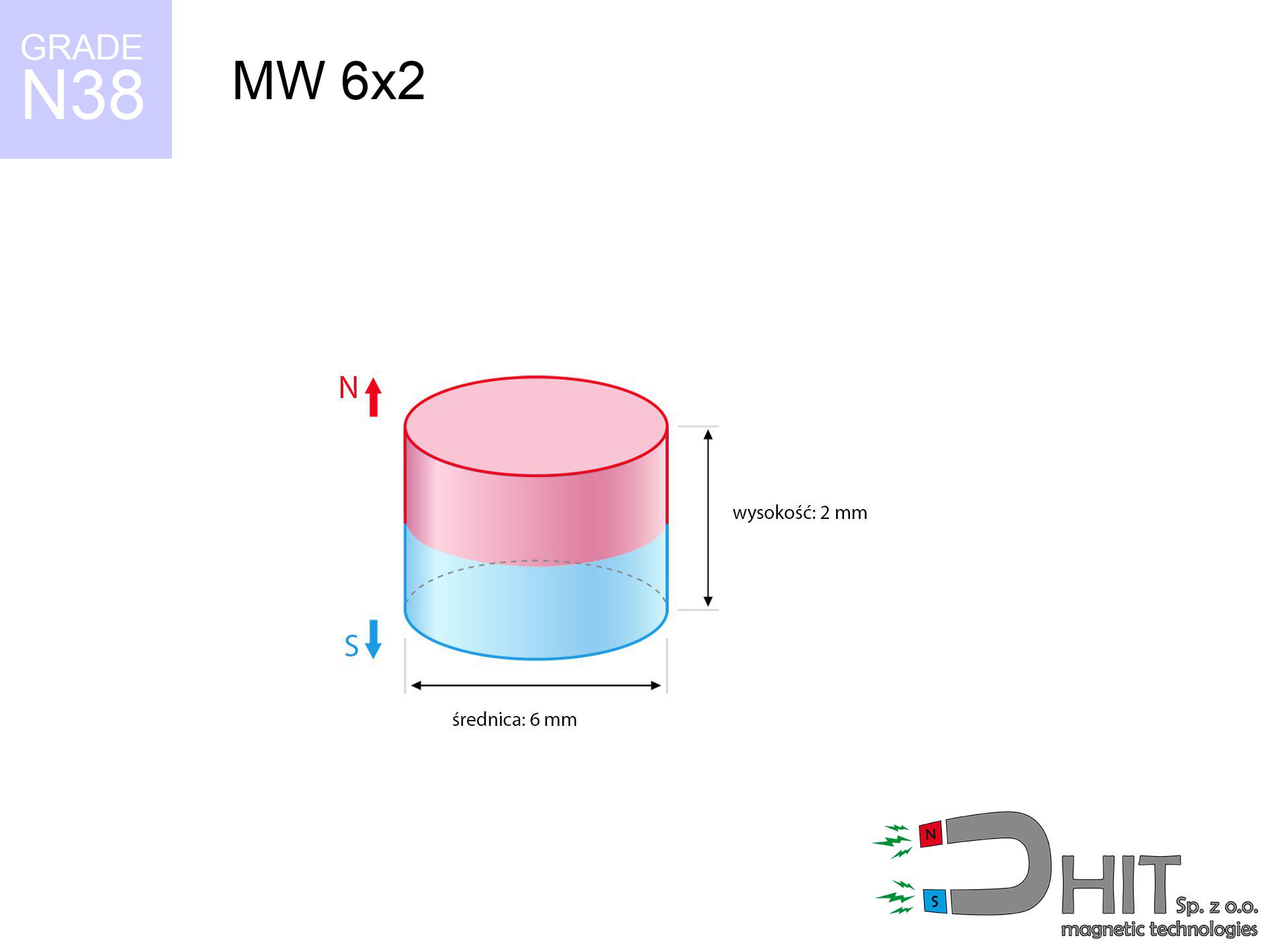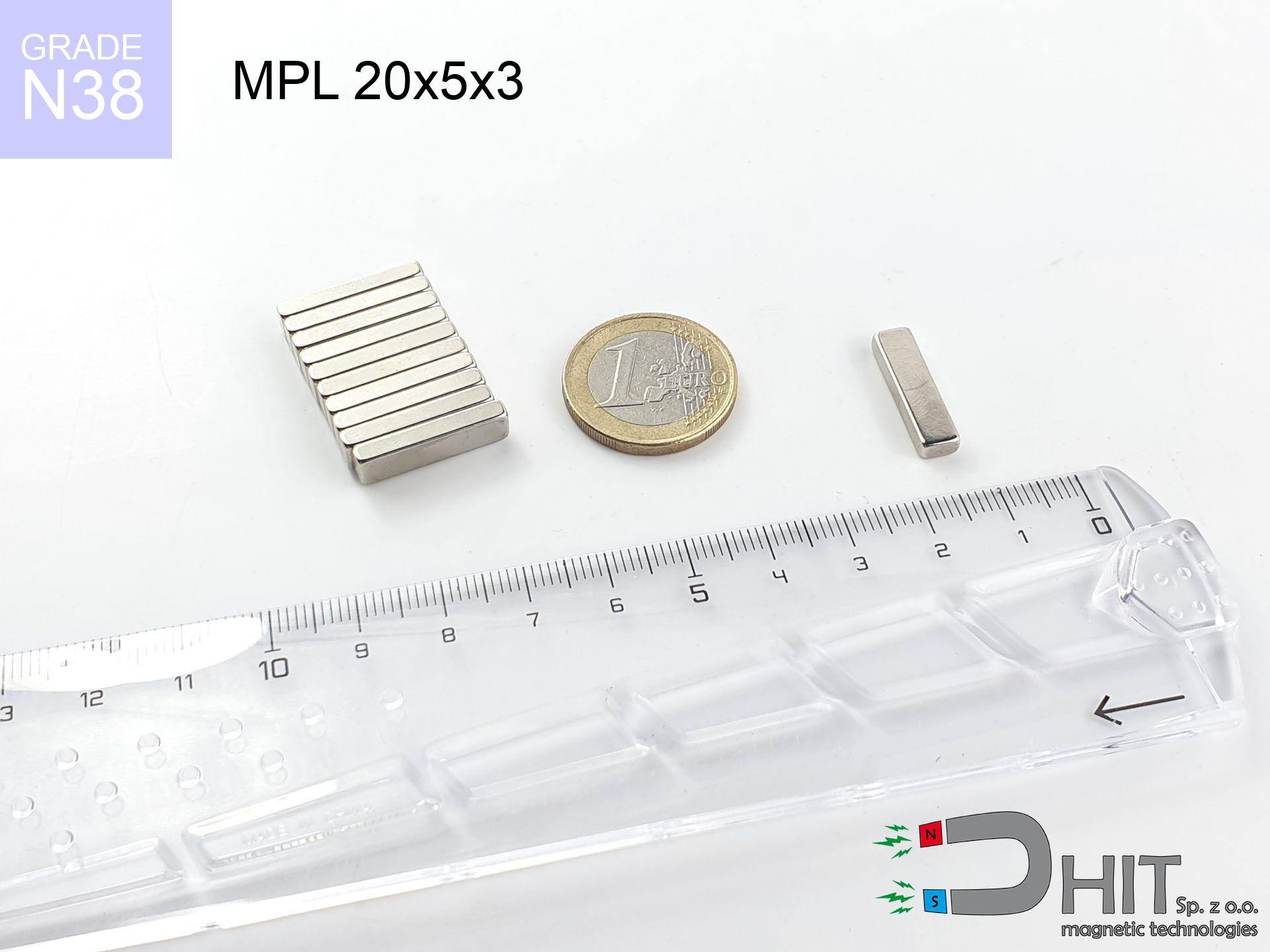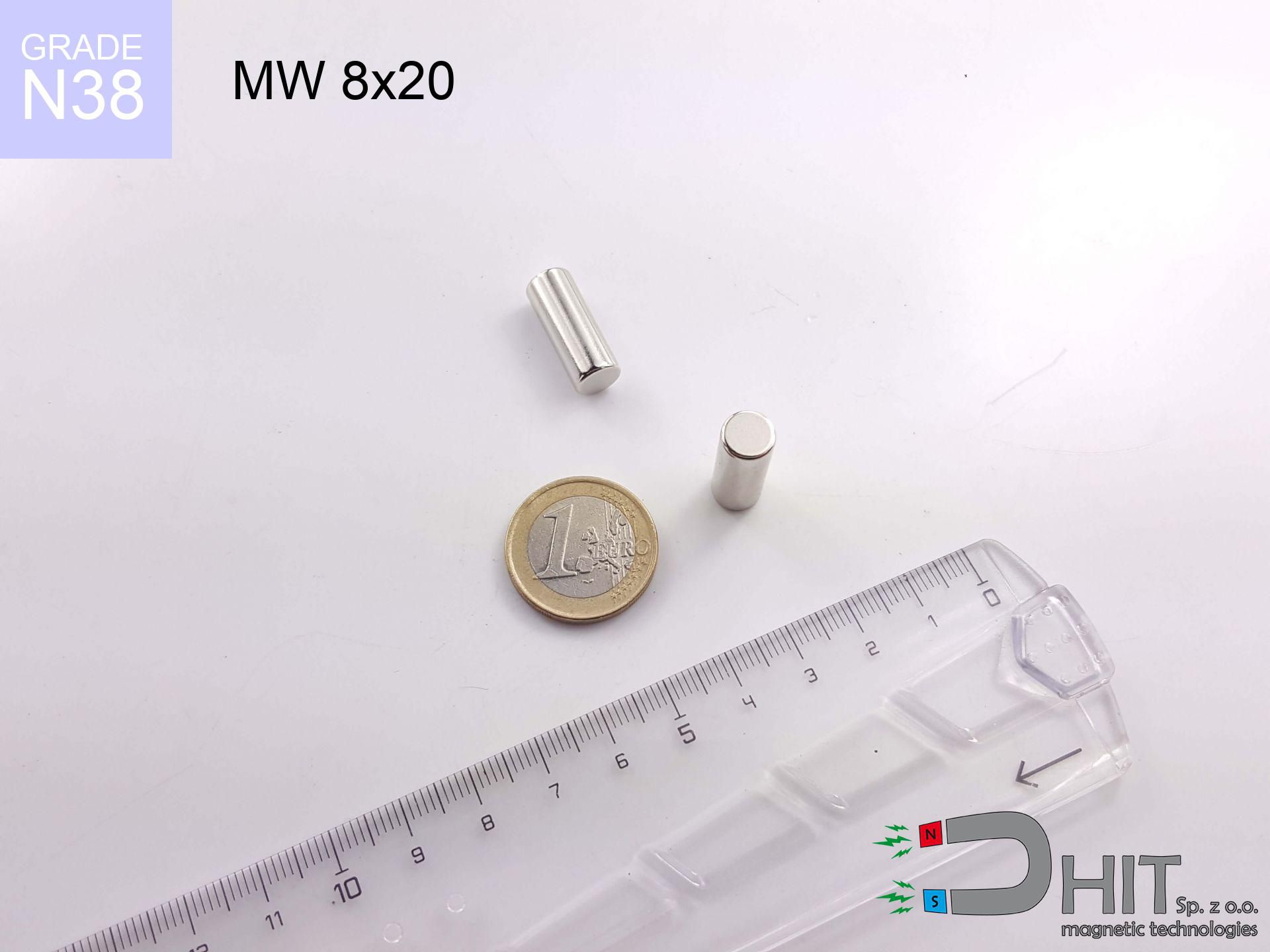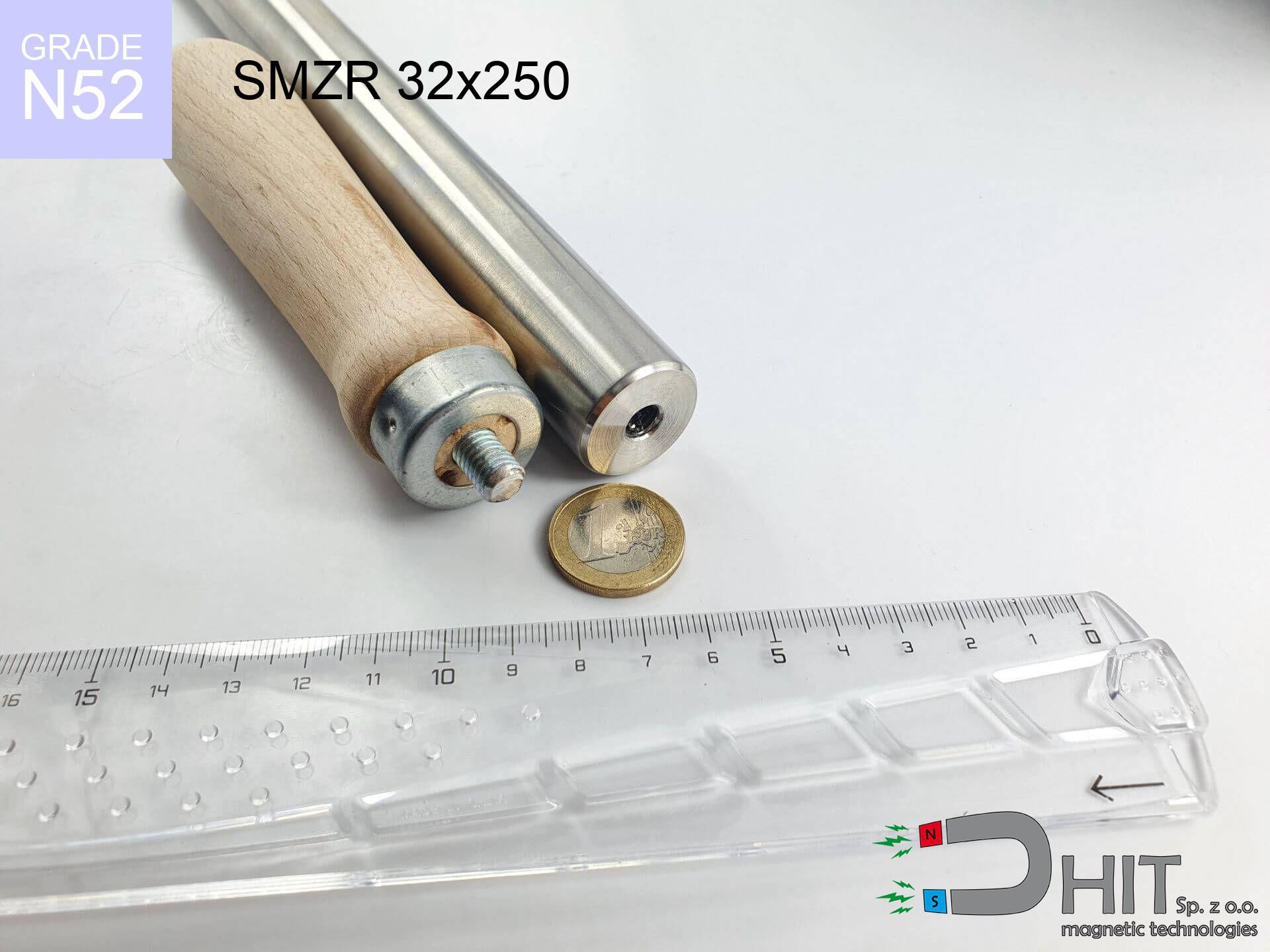MW 6x2 / N38 - neodymium magnet
cylindrical magnet
catalog number 010092
GTIN: 5906301810919
diameter Ø
6
mm [±0,1 mm]
height
2
mm [±0,1 mm]
magnetizing direction
↑ axial
capacity ~
0.66 kg / 6.47 N
magnetic induction ~
343.37 mT / 3,434 Gs
max. temperature
≤ 80
°C
catalog number 010092
GTIN: 5906301810919
diameter Ø
6 mm [±0,1 mm]
height
2 mm [±0,1 mm]
magnetizing direction
↑ axial
capacity ~
0.66 kg / 6.47 N
magnetic induction ~
343.37 mT / 3,434 Gs
max. temperature
≤ 80 °C
0.26 ZŁ gross price (including VAT) / pcs +
0.21 ZŁ net price + 23% VAT / pcs
bulk discounts:
need more quantity?Want to bargain?
Call us tel: +48 22 499 98 98 or write through form on our website. You can check the power as well as the appearance of neodymium magnets in our magnetic calculator magnetic calculator
Orders placed by 2:00 PM will be shipped on the same business day.
Specification: cylindrical magnet 6x2 / N38 ↑ axial
Magnetic properties of the material N38
Physical properties of sintered neodymium magnets Nd2Fe14B
Moreover, although neodymium is a component of the strongest magnets, they are susceptible to corrosion in humid environments. Therefore, they are coated with a thin layer of nickel to protect them from corrosion. Interestingly that NdFeB neodymium magnets are about 13% lighter than SmCo magnets and, despite their power, easily break, which requires special caution during their handling. Therefore, any mechanical processing should be done before they are magnetized.
In terms of safety, there are several recommendations regarding the use of these magnets. It is advisable to avoid their use in acidic, basic, organic environments or in solvents, as well as in water or oil. Additionally, they can distort data on magnetic cards and hard drives, although data deletion using a neodymium magnet is not guaranteed.
In terms of properties in different environments, neodymium magnets are sensitive to corrosion, especially in conditions of high humidity. Therefore, they are often coated with thin coatings, such as epoxy, to protect them from external factors and extend their lifespan. Temperatures exceeding 130°C can cause a deterioration of their magnetic properties, although there are particular types of neodymium magnets that can withstand temperatures up to 230°C.
As for potential dangers, it is important to avoid using neodymium magnets in acidic conditions, basic environments, organic or solvent environments, unless they are adequately insulated. Additionally, their use is not recommended in wet conditions, oil, or in an atmosphere containing hydrogen, as they may lose their magnetic strength.
List recommended items
Advantages as well as disadvantages of neodymium magnets NdFeB.
Apart from immense power, neodymium magnets have the following advantages:
- They do not lose their power (of the magnet). After about 10 years, their power decreases by only ~1% (theoretically),
- They protect against demagnetization caused by external magnetic sources very well,
- By applying a shiny coating of nickel, gold, or silver, the element gains an aesthetic appearance,
- They exhibit very high magnetic induction on the surface of the magnet,
- Thanks to their high temperature resistance, they can operate (depending on the shape) even at temperatures up to 230°C and above...
- The ability for precise shaping or customization to specific needs – neodymium magnets can be produced in various forms and dimensions, which amplifies their universality in usage.
- Key role in modern technologies – find application in computer drives, electric motors, medical equipment or various technologically advanced devices.
Disadvantages of neodymium magnets:
- They can break when subjected to a powerful impact. If the magnets are exposed to impacts, we recommend using magnets in a protective case. The steel housing in the form of a holder protects the magnet from impacts, and at the same time increases its overall strength,
- They lose power at high temperatures. Most neodymium magnets experience permanent loss of strength when heated above 80°C (depending on the form and height). However, we also offer special magnets with high temperature resistance, up to 230°C,
- Magnets exposed to a humid environment can corrode. Therefore, when using them outdoors, we suggest using waterproof magnets made of rubber, plastic, or other moisture-resistant materials,
- Limited ability to create threads or complex shapes in the magnet - the use of a housing is recommended - magnetic holder
- Potential hazard associated with microscopic parts of magnets can be dangerous, when accidentally ingested, which is crucial in the context of child safety. It's also worth noting that tiny parts of these devices can be problematic in medical diagnosis after entering the body.
Handle Neodymium Magnets with Caution
Keep neodymium magnets away from people with pacemakers.
In the case of neodymium magnets, there is a strong magnetic field. As a result, it interferes with the operation of a heart pacemaker. However, if the magnetic field does not affect the device, it can damage its components or deactivate the device when it is in a magnetic field.
Dust and powder from neodymium magnets are flammable.
Do not attempt to drill into neodymium magnets. Mechanical processing is also not recommended. Once crushed into fine powder or dust, this material becomes highly flammable.
Magnets made of neodymium are particularly delicate, which leads to their breakage.
In the event of a collision between two neodymium magnets, it can result in them getting chipped. Despite being made of metal as well as coated with a shiny nickel plating, they are not as hard as steel. In the case of a collision between two magnets, there can be a scattering of small sharp metal fragments in different directions. Protecting your eyes is essential.
Neodymium magnets can demagnetize at high temperatures.
Although magnets have shown to retain their effectiveness up to 80°C or 175°F, this temperature may vary depending on the type of material, shape, and intended use of the magnet.
Neodymium magnets are over 10 times stronger than ferrite magnets (the ones in speakers), and their power can surprise you.
Please review the information on how to handle neodymium magnets and avoid significant harm to your body, as well as prevent unintentional disruption to the magnets.
If you have a nickel allergy, avoid contact with neodymium magnets.
Studies clearly indicate a small percentage of people who suffer from metal allergies such as nickel. An allergic reaction often manifests as skin redness and rash. If you have a nickel allergy, try wearing gloves or avoid direct contact with nickel-plated neodymium magnets.
Do not bring neodymium magnets close to GPS and smartphones.
Magnetic fields generated by neodymium magnets interfere with compasses and magnetometers used in navigation, as well as internal compasses of smartphones and GPS devices.
It is crucial not to allow the magnets to pinch together uncontrollably or place your fingers in their path as they attract to each other.
Magnets may crack or alternatively crumble with careless joining to each other. Remember not to approach them to each other or hold them firmly in hands at a distance less than 10 cm.
Maintain neodymium magnets far from youngest children.
Neodymium magnets are not toys. Be cautious and make sure no child plays with them. They can be a significant choking hazard. If multiple magnets are swallowed, they can attract to each other through the intestinal walls, causing severe injuries, and even death.
Do not place neodymium magnets near a computer HDD, TV, and wallet.
Strong magnetic fields emitted by neodymium magnets can destroy magnetic storage media such as floppy disks, credit cards, magnetic ID cards, cassette tapes, video tapes, or other devices. In addition, they can damage televisions, VCRs, computer monitors, and CRT displays. Avoid placing neodymium magnets in close proximity to electronic devices.
So you are aware of why neodymium magnets are so dangerous, see the article titled How very dangerous are very strong neodymium magnets?.

